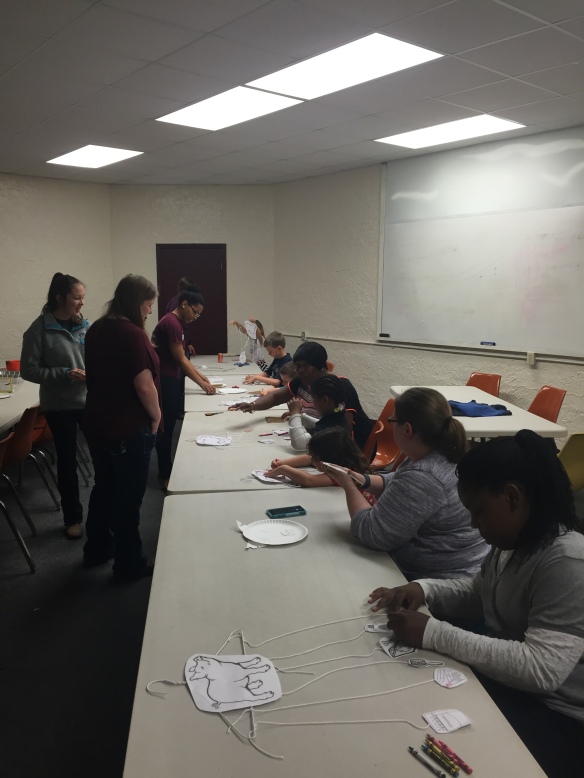Note: This blog post was written by a group of students in the Capstone in Animal and Dairy Sciences course, who were assigned to work with youth in a nearby county to teach them about sheep
“Speaking of Sheep”
“What are those fluffy white animals that you see on a farm, and why do we have them?” This was the question we asked around sixty kindergartners from in Columbus, Mississippi, on March 11, 2016. Our main project for our Animal and Dairy Sciences senior capstone class was to design and create an “activity box” to teach children about a specific farm animal and why they are significant to the world. Based on our experience with different animals, our group was assigned the animal we had the least experience working with – sheep.
Finding a time for five seniors to all meet up and develop our prop box proved to be difficult; so, our group strategy for the county prop box project was to divide and conquer. We split up the task evenly so everyone had a job to do. Therefore, our “prop box” consisted of five sections: an introductory “Q & A” about sheep and why we have them, a herding activity, a shearing activity, a “feel box”, and a take-home sheep activity book. The introduction included basic information about sheep with a few pictures, and we gave each child their own sheep to use for the subsequent activities (the “sheep” were balloons with faces drawn on them). For the herding activity, the children used shepherd’s canes to herd their “sheep” into a “feeding pen” in a relay-race fashion; and once the sheep were all herded, we informed the children about different forms of feed that they could give to their sheep. After all the sheep were “fed”, the children brought their sheep over to be sheared. For this activity, we placed shaving cream on each child’s balloon sheep to simulate wool; the children then used a tongue depressor to “shear” their sheep. Following the release of the sheep back into the pasture after shearing, the young students were able to participate in a “feel box” activity. The “feel box” was a shoe box with a hole cut into three of the sides with a curtain over each hole so that one could not peek inside. Each separated portion of the shoe box contained a different material: silk, cotton, or wool. After having felt inside each compartment, the children would guess which hole contained the wool before we opened the shoe box to reveal the materials inside.
We were surprised at how receptive the students were to learning about sheep. When we asked the children about their favorite part of the day, they had a wide range of answers, but the general consensus was that the “shearing” activity was the most popular. They were also very excited when they each received their own balloon sheep to care for during our presentation. The teachers informed us that the students never really had the opportunity to engage in hands-on activities like those we provided. The hardest part of the day was keeping a few of the more excitable students focused on the task at hand; however, whenever the students’ teachers were in the room, they all seemed to be on their best behavior. When we asked each class if they had fun learning about sheep, the answer was always a loud “yes!” At the end of each class, we reviewed the students on their new knowledge about sheep, and they were usually able to answer all of our questions. Some of the other funny quotes from the children were “this is so magical!” and “this was probably the best day of my life.”
As we prepare to do a similar activity for the upcoming “Afternoon on the Farm,” we hope to be able to use live sheep in our presentation. After the response we received from the balloon sheep, we believe it will really help the students to be able to see and feel a live sheep (with real wool) while we teach them about these fluffy farm creatures. This was an incredible experience for our group. A much different understanding comes from teaching students rather than always being taught. We had fun enlightening these young children about a part of agriculture that they may have never been able to learn much about, and we were cheerful that the students were excited to learn about the importance of sheep and had fun in the process.


















